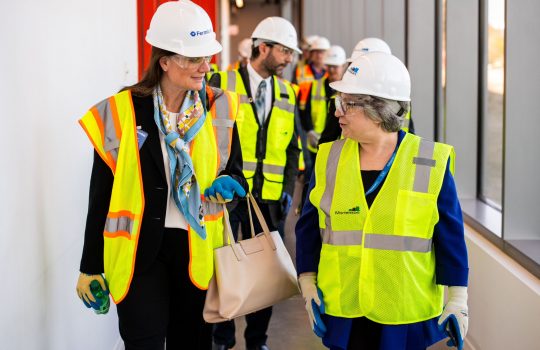BATAVIA, Ill.–Scientists at the Department of Energy’s Fermi National Accelerator Laboratory will offer special “Antimatter Tours” on Saturday, July 11, and August 8, starting at 10:00 a.m. The free program includes a 45-minute presentation by Fermilab scientist Keith Gollwitzer, head of the Fermilab Antiproton Source, followed by a 2-hour tour that includes a walk through a section of the accelerator tunnel that is used to produce antiprotons. Registration is required.
Since its start-up in 1985, Fermilab’s Antiproton Source has produced more than nine nanograms (billionth of a gram) of antiprotons, the largest amount ever produced by any accelerator. Visitors will learn about the nature of antimatter and how scientists produce tiny amounts of antiprotons at Fermilab. Throughout the program scientists will be on hand to answer questions.
Often referred to as the “mirror world,” antimatter has the opposite electrical charge of matter. Upon contact, matter and antimatter particles annihilate and release energy. This effect is used, for example, in a medical application called Positron Emission Tomography. Known as a PET scan, the technique relies on the detection of light rays produced by the annihilation of positrons, the antimatter-partners of the well-known electrons.
Space for the tour is limited. Visitors need to register by sending an e-mail to edreg@fnal.gov. The minimum age for participation is 10 years. The tour requires walking and climbing three flights of stairs. Visitors should wear comfortable shoes. For more information call 630-840-5588.
Fermilab is a Department of Energy Office of Science national laboratory operated under contract by the Fermi Research Alliance, LLC. The DOE Office of Science is the single largest supporter of basic research in the physical sciences in the nation and helps ensure U.S. world leadership across a broad range of scientific disciplines.



